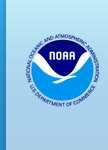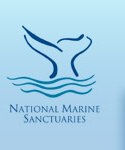NOAA, Florida International University and Florida Department of Environmental Protection Partner to Protect Florida Keys’ Resources
October 2, 2014
Contact:
NOAA: Rachel Pawlitz
305-809-4700 x236
FIU: JoAnn Adkins
305-348-0398
DEP: Amber Nabors
850-579-6188
Resource protection, science and public education are the foundation of a new agreement between NOAA’s Florida Keys National Marine Sanctuary and Florida International University (FIU) to protect the natural and cultural resources of the Florida Keys.
Under the agreement, NOAA is committing $1.3 million and FIU will provide staff support for key sanctuary operations and partnership opportunities to further the sanctuary’s mission. Scientists who monitor and assess natural resource conditions, mechanics who maintain facilities and mooring buoys used by the public, and education and outreach specialists are among the personnel that FIU is supporting.
“Our scientists have been conducting research and monitoring activities in the Florida Keys National Marine Sanctuary since its inception in 1990,” said James Fourqurean, director of the FIU Marine Education and Research Initiative in the Florida Keys. “This partnership simply helps to realize FIU’s goal to be engaged with the local community, to help lead the development of a vibrant economy, to create strong educational opportunities, and to preserve and protect our environment.”
FIU has been working in the Keys for decades monitoring seagrass, water quality and coral reefs as part of the Florida Keys National Marine Sanctuary Water Quality Protection Program and also operates the FIU Aquarius Reef Base, the world’s only undersea research laboratory, which is located off the coast of Key Largo.
“We are thrilled to be welcoming Florida International University to the Florida Keys National Marine Sanctuary team,” said Sean Morton, sanctuary superintendent. “They have been partners for a long time with NOAA and Florida’s Department of Environmental Protection. This agreement, along with their Aquarius Reef Base operations, will foster many new opportunities in the sanctuary for research, education and resource protection.”
The Department of Environmental Protection’s Florida Coastal Office maintains its role as the state of Florida co-trustee of the sanctuary, continuing a long-standing agreement. Since the 1975 establishment of Key Largo National Marine Sanctuary, now part of Florida Keys National Marine Sanctuary, the agreement has enabled state-federal collaboration in the management of natural and cultural resources in the waters of the Keys.
Florida Keys National Marine Sanctuary protects 2,900 square nautical miles of critical marine habitat, including coral reef, hard bottom, sea grass meadows, mangrove communities and sand flats, as well as shipwrecks and maritime heritage resources. NOAA and the state of Florida manage the sanctuary. Visit us at http://floridakeys.noaa.gov or on Facebook at www.facebook.com/floridakeysnoaagov.
NOAA’s mission is to understand and predict changes in the Earth's environment, from the depths of the ocean to the surface of the sun, and to conserve and manage our coastal and marine resources. Join NOAA on Facebook, Twitter and our other social media channels.
Florida International University is recognized as a Carnegie-engaged university. It is a public research university with colleges and schools that offer more than 180 bachelor’s, master’s and doctoral programs in fields such as engineering, international relations, architecture, law and medicine. As one of South Florida’s anchor institutions, FIU contributes $9.8 billion each year to the local economy. For more information about FIU, visit http://www.fiu.edu/.
The Department of Environmental Protection’s Florida Coastal Office manages 41 aquatic preserves, three National Estuarine Research Reserves, the Coral Reef Conservation Program, and the Florida Keys National Marine Sanctuary. The Florida Coastal Office’s programs and activities are designed to help Floridians better understand and conserve the state’s resources through research, education and conservation. For more information, visit http://www.dep.state.fl.us/coastal/.
On The Web:
- Florida Keys National Marine Sanctuary: http://floridakeys.noaa.gov/
- Florida International University: http://www.fiu.edu/
- Department of Environmental Protection: http://www.dep.state.fl.us/coastal/


